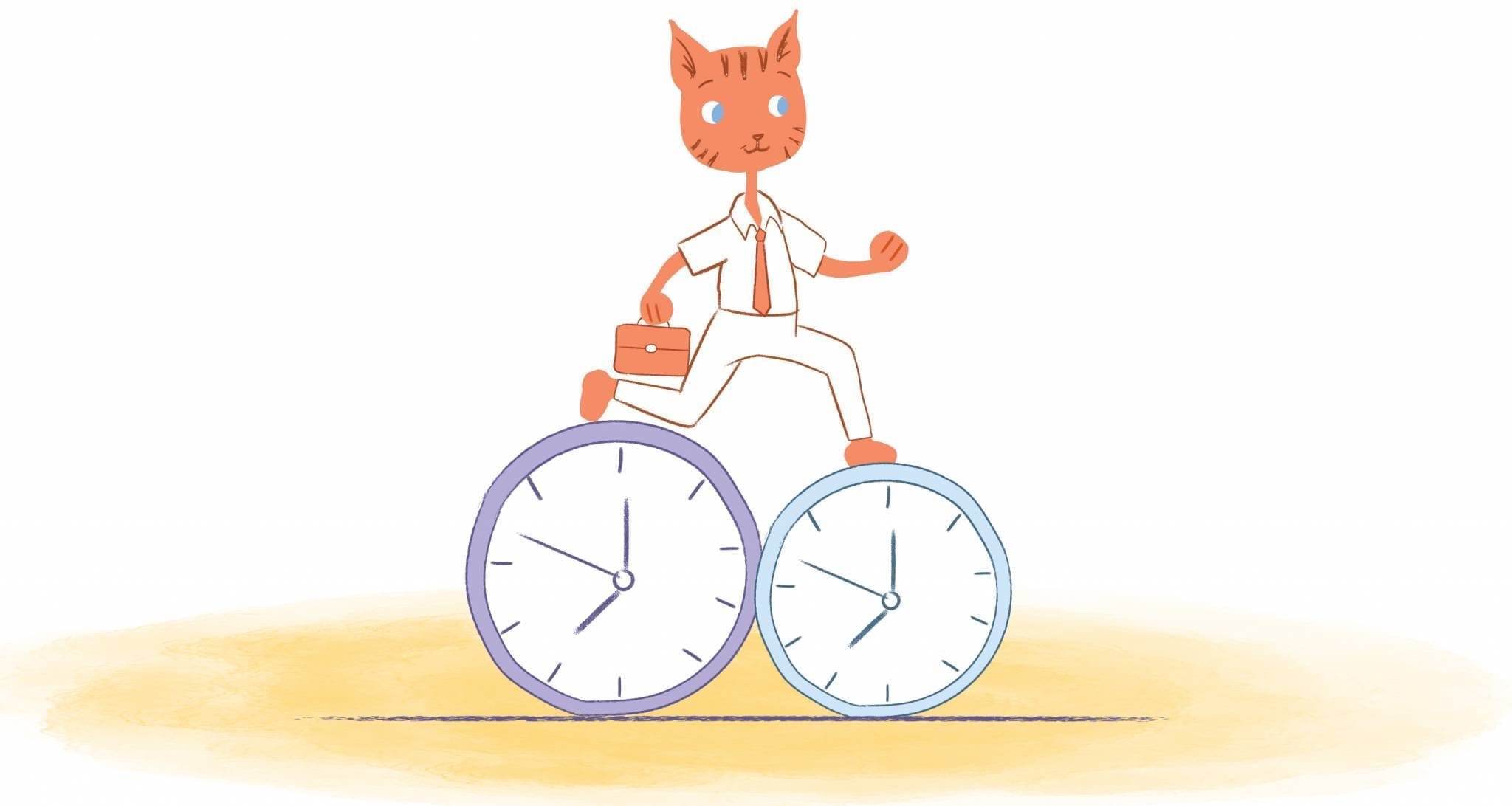

There are many reasons to try to limit traveling by car. It could be to improve environmental conditions in your area, save money on gas, or simply because you live in a city with difficult traffic patterns or parking situations. You can go car-free by managing your time more effectively.
Switching to alternate forms of transportation can be a difficult adjustment at first. But most people find that once adjusted to the change — they love it. Manage your time effectively, and you’ll be able to grab that mass-transit and get a ton of work done while traveling. Here are nine tips to get your transition started.
Keep Track of Bus Schedules
If public transportation is available, it’s a great alternative to driving your own vehicle. Busses hit up most major spots in the city, and the amount of passengers that can fit into a single bus really cuts down on emissions.
To make bus riding work, keep track of their regular schedule. Missing your bus can result in a lot of wasted time, so you want to be prepared and punctual. Record bus times in your online calendar to make sure you never get left behind.
Use Your Commute Time
If going car-free means relying on public transportation, make good use of your commute time. Your travel time likely will be extended by using public transportation, but you can make up that deficit by being productive during the trip.
Use your commutes to review your online calendar, check your emails, and even make a few phone calls. The better you use this time, the more you can justify eliminating your personal gas-guzzler.
Plan Bike Routes
If you opt for biking as your preferred transportation method, you’ll need to plan for extra travel time. This will likely require leaving a little earlier for each trip, so plan accordingly with your online calendar.
Additionally, you should plan your bike routes to take the most direct path possible. Riding a bike means you can take shortcuts a car wouldn’t be able to. This can cut down your travel time as much as possible instead of doubling the time it would take in a car. Not to mention the extra exercise you’ll be getting. Don’t forget to check the weather forecast!
Map Out the City
Really want to manage your time without a car? Plan out every spot in the city you might need to visit on a given day. The more efficiently you can hit each stop, the better you’ll use your time.
Backtracking on a bus or a bike can be incredibly time-consuming. Try to hit all your stops in a loop, and you won’t have to worry about wasting any time.
Nail Your Daily Routines
Speaking of leaving early to accommodate new transportation, getting your daily routine on lock will help free up the time you need. Well-calibrated morning and nightly routines will ensure you have plenty of time to bike, walk, or take a shuttle to your destination.
A nightly routine will help you make sure you’ve covered all of your responsibilities and aren’t staying up too late. A morning routine will help you get your day started just right, especially if you need to adjust to getting up earlier to clock in on time.
Look for Closer Locations
To enable going car-free, look for locations closer to your residence. This will cut down on how far you have to travel, allowing you to make walking and biking a possibility. It’s difficult to truly ditch your vehicle when you have to travel a long way.
Research grocery stores and other services you frequent that are close to where you live. You might have to make some adjustments, even dropping your preferred store in exchange for one on the bus route or within walking distance.
Organize a Carpool
Instead of going completely car-free, you can organize a carpool system with friends and coworkers to reduce the total number of cars on the road. Everyone pitches in to buy gas and rotate drivers.
You can create and execute a carpool plan using your online calendar. By creating and sharing events, you can make sure everyone is timely and in the loop. This way carpooling will be an efficient solution, not just a scramble.
You can use a carpool for more than just traveling to work. Organizing carpools with other parents for sports practices and school activities can provide the same benefits.
Schedule Ride Sharing
Ridesharing is similar to carpooling, except done through an app with contracted drivers. While more expensive, this option is more efficient and on-demand. Planning a carpool can be troublesome, especially with changing plans, which might be a more viable option.
Most ride-sharing services allow you to book a ride in advance. Say you need to be picked up every morning at seven. Add this into your online calendar and plan it out in your app. Be ready every day, and you’ll always get to where you need to go.
Ease Into It
Going from traveling everywhere by car to ditching it entirely is a drastic switch. You’re better off making the transition slowly so you can get adjusted to your new way of life. Making the change all at once is asking for a bumpy ride.
Use your online calendar to plot times; you can start making a smooth transition. Maybe you plan weekend hikes to get into better shape or take your biweekly grocery trip by bus to get familiar with the system. Bit by bit, you’ll be able to get fully adjusted.
The benefits of going car-free are worth considering. If you decide to give it a try, use this list to make the switch and manage your time effectively. It will make it easier to transition and make going car-free a viable and beneficial option.











Hunter Meine
Hunter Meine is a BYU-Idaho graduate, husband, father, and writer. When he's not writing, he's playing sports or enjoying the outdoors with his wife and daughter.